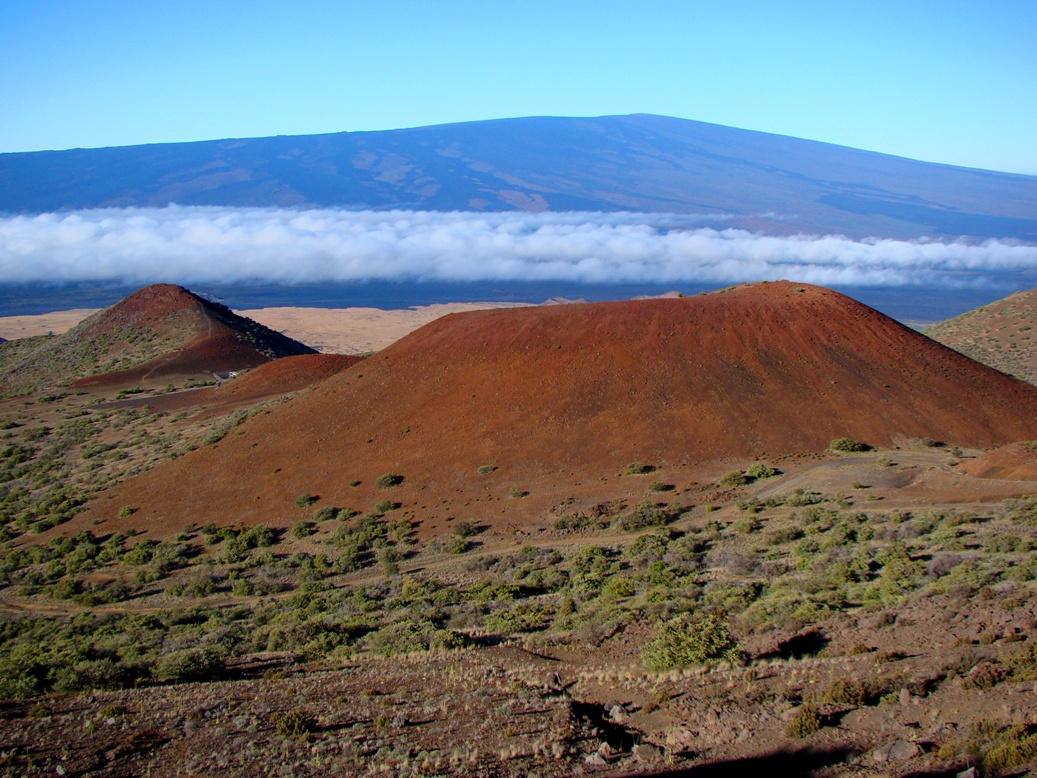
/hawaii--big-island--hawaii-volcanoes-national-park--mauna-loa-eruption--lava-flowing--steam-rising--126940483-59a8314ad088c0001184d62a.jpg)
Read our Frequently Asked Questions about Mauna Loa. Mauna Loa is certain to erupt again, and with such a propensity to produce large flows, we carefully monitor the volcano for signs of unrest. It last erupted in 1984, when a lava flow came within 7.2 km (4.5 mi) of Hilo, the largest population center on the island. It has produced large, voluminous flows of basalt that have reached the ocean eight times since 1868. Mauna Loa is among Earth's most active volcanoes, having erupted 33 times since its first well-documented historical eruption in 1843. The Hawaiian name "Mauna Loa" means "Long Mountain." This name is apt, for the subaerial part of Mauna Loa extends for about 120 km (74 mi) from the southern tip of the island to the summit caldera and then east-northeast to the coastline near Hilo. This makes the volcano's summit about 17 km (55,700 ft) above its base! The enormous volcano covers half of the Island of Hawai‘i and by itself amounts to about 85 percent of the area of all the other Hawaiian Islands combined. Mauna Loa Volcano is a volcanic location where Big Jet uses his super hot laser beam to make it erupt to unleash lava and smoke Fortunately, June can do a. The information gathered there helps scientists protect habitats and settlements on Earth.Its long submarine flanks descend to the seafloor an additional 5 km (16,400 ft), and the seafloor in turn is depressed by Mauna Loa's great mass another 8 km (26,200 ft). Mauna Loa Observatory performs important work tracking Earth’s changing climate. First easy part is 17 miles drive on one lane road to the end of the paved road at the weather observatory.There the pavement ends and you can hike 6.0 miles.

The curve describes the longest continuous record of CO2 in Earth’s atmosphere. He was the first researcher to report that the levels of CO2 in the atmosphere were consistently rising on Earth. After volcanic mountains reach the surface. The oldest volcano on the island, Kohala, is more than a million years old, and Klauea, the youngest, is believed to be between 210,000 and 280,000 years of age. He was a professor at Scripps Institution of Oceanography. Today only two volcanoes are left active, the Mauna Loa and the Kilauea at the southeasternmost end of the chain. Mauna Loa is one of five subaerial volcanoes that make up the island of Hawaii. The measurements are displayed in a graph known as the “ Keeling Curve,” named after the late Dr. Perhaps the most notable, though, is the observatory’s measurements of carbon dioxide (CO2). Some of the gases they measure include carbon monoxide, methane, nitrous oxide, and sulfur dioxide. To detect any change in Earth’s climate, Mauna Loa measures different gases in the air. Mauna Loa, the worlds largest volcano, located on the south-central part of the island of Hawaii, Hawaii state, U.S., and a part of Hawaii Volcanoes. Scientists began studying the atmosphere at Mauna Loa in the 1950s. It has an estimated volume of 9,600 cubic miles and takes up half the land of Hawaii. It is one of the largest volcanoes and mountains in the world and has been called the 'monarch of mountains'. This means the air is relatively clean, which makes it easier for scientists to study. The Mauna Loa Volcano The Mauna Loa volcano is located in Hawaii and means 'Long Mountain' in Hawaiian. The observatory is approximately 3,400 meters (11,141 feet) above sea level and remains a long distance away from significant pollution sources. long-traveled lava flows, and it will erupt again and pose a significant risk to inhabitants of the Island of Hawai‘i. Mauna Loa, the world’s largest volcano, has erupted many times, producing large and. The seismic network detected over 40 earthquakes at 0.5-6 km depth located 21 km W-NW of the. It is located in Hawaii on the side of Mauna Loa, the world’s largest active volcano. oval volcanic depression) and two rift zones. The Hawaiian Volcano Observatory (HVO) reported that a swarm of small earthquakes occurred at 15:46 local time yesterday beneath the southeastern flank of Mauna Loa volcano and northwestern summit of Kilauea volcano at zone known as upper Ka'iki. Mauna Loa Observatory’s location marks an ideal spot for sampling Earth’s air.
/hawaii--big-island--hawaii-volcanoes-national-park--mauna-loa-eruption--lava-flowing--steam-rising--126940483-59a8314ad088c0001184d62a.jpg)
This data is critical because the ozone layer protects us from harmful radiation produced by the sun’s ultraviolet rays. They also measure elements that may deplete the ozone layer. Mauna Loa Observatory is a station that measures elements in the atmosphere that contribute to climate change on Earth.


 0 kommentar(er)
0 kommentar(er)
